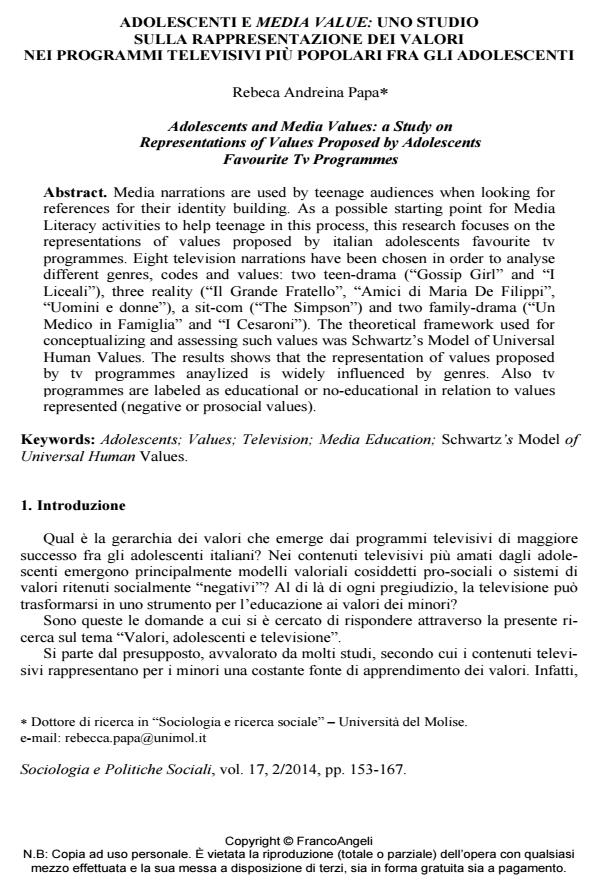Adolescents and Media Values: a Study on Representations of Values Proposed by Adolescents Favourite Tv Programmes
Journal title SOCIOLOGIA E POLITICHE SOCIALI
Author/s Maria Angela Polesana
Publishing Year 2014 Issue 2014/2
Language Italian Pages 15 P. 153-167 File size 134 KB
DOI 10.3280/SP2014-002010
DOI is like a bar code for intellectual property: to have more infomation
click here
Below, you can see the article first page
If you want to buy this article in PDF format, you can do it, following the instructions to buy download credits

FrancoAngeli is member of Publishers International Linking Association, Inc (PILA), a not-for-profit association which run the CrossRef service enabling links to and from online scholarly content.
Media narrations are used by teenage audiences when looking for references for their identity building. As a possible starting point for Media Literacy activities to help teenage in this process, this research focuses on the representations of values proposed by italian adolescents favourite tv programmes. Eight television narrations have been chosen in order to analyse different genres, codes and values: two teen-drama ("Gossip Girl" and "I Liceali"), three reality ("Il Grande Fratello", "Amici di Maria De Filippi", "Uomini e donne"), a sit-com ("The Simpson") and two family-drama ("Un Medico in Famiglia" and "I Cesaroni"). The theoretical framework used for conceptualizing and assessing such values was Schwartz’s Model of Universal Human Values. The results shows that the representation of values proposed by tv programmes anaylized is widely influenced by genres. Also tv programmes are labeled as educational or no-educational in relation to values represented (negative or prosocial values).
Keywords: Adolescents; Values; Television; Media Education; Schwartz’s Model of Universal Human Values
Maria Angela Polesana, Adolescenti e media value: uno studio sulla rappresentazione dei valori nei programmi televisivi più popolari fra gli adolescenti in "SOCIOLOGIA E POLITICHE SOCIALI" 2/2014, pp 153-167, DOI: 10.3280/SP2014-002010